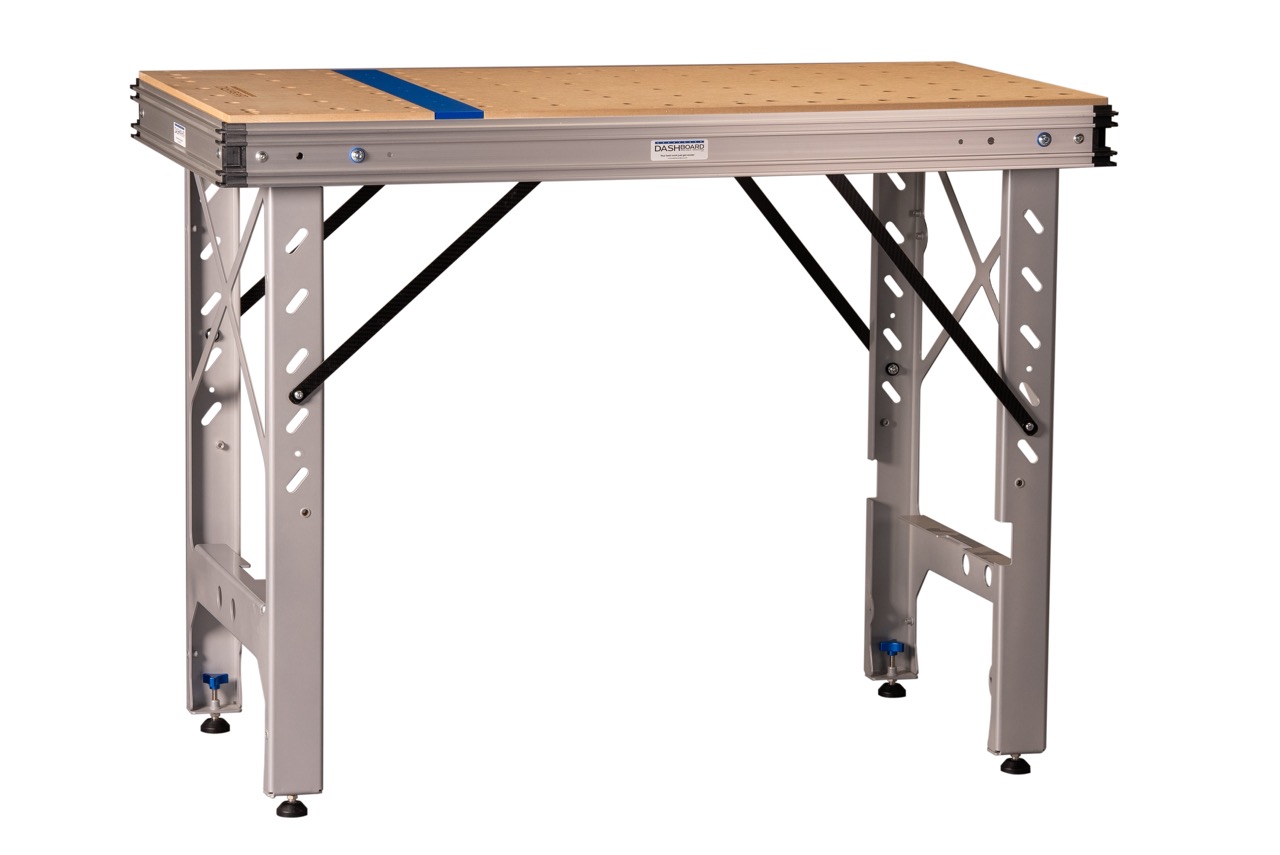The smell of sawdust hangs in the air. Your grandfather's massive oak workbench dominates the center of your shop—sturdy, reliable, immovable. And therein lies the problem.
Today's woodworker often resembles a nomad more than a stationary craftsman. We work in garages that double as parking spaces, temporary job sites, and increasingly smaller urban apartments.
The romance of that heirloom bench collides with modern reality: we need mobility without sacrificing capability.
What Makes a Workshop Truly Modern?
The journey from the 1970s Black+Decker Workmate to today's sophisticated portable systems reveals an evolution of thinking about what woodworkers actually need:
- Material innovation: Shifting from solid lumber to precisely engineered composites and aluminum extrusions that maximize strength-to-weight ratios
- Systematic design: Moving beyond "just a table" to integrated ecosystems of components that work together seamlessly
- Precision integration: Incorporating repeatable accuracy through consistent hole patterns, reference surfaces, and tool compatibility
- Ergonomic consideration: Designing for proper working heights, reduced strain, and efficient workflows
The Dash-Board Workbench exemplifies this evolution. At 92.56" × 24.41" × 3.5", it provides substantial work surface while remaining transportable. Its patented design allows setup in about a minute—transforming from transport mode to full workshop capability nearly anywhere.
But beyond specifications lies a philosophical difference: these systems are designed to empower rather than constrain.
The Measurable Differences
Let's cut through marketing speak and examine tangible differences:
Weight: Traditional workbenches often exceed 200 pounds, while even substantial modern portable systems like the Dash-Board remain manageable at approximately 60 pounds.
Setup time: Traditional setups can take hours to assemble or disassemble. Modern systems like the Dash-Board require approximately one minute.
Precision capability: Modern systems enable repeatable accuracy that was previously possible only with stationary equipment:
- Rips up to 100" (2540mm) with track saw integration
- Crosscuts over 48" (1219mm) with proper accessories
- Unprecedented vertical clamping with multiple track options
Space efficiency: When not in use, modern systems collapse to a fraction of their operational footprint—critical for those working in multi-purpose spaces.
The Hidden Challenges of Transitioning
Despite clear advantages, transitioning from traditional to modern systems isn't without hurdles:
Investment reality: Quality modern systems represent a significant investment. The Dash-Board Workbench starts at $1,699, with accessory bundles potentially adding another $1,000-2,000. This reflects both material quality and engineering sophistication—but requires commitment.
Mental adjustment: Years of working on traditional benches create muscle memory and habits that take time to reprogram. Modern systems often employ different work-holding methods and workflow approaches.
Tool ecosystem: Maximum benefit comes from integrating compatible tools—particularly track saws, which may represent additional investment for those coming from a table saw-centric workshop.
Learning curve: Mastering all capabilities of comprehensive systems takes time. As one Dash-Board user noted: "I've been biting at the bit to get out to using it... I'm quite impressed with the dog holes accuracy."
The Complete System Approach
.jpg)
Modern portable workshop systems transcend being merely a surface. They become platforms supporting entire workflows through carefully designed accessories:
- Guide Rail Brackets: Enable precise, repeatable cuts with track saws at angles from 90° to 45°, remaining rock-solid during operation.
- Track Stars: Provide additional support, especially for longer pieces extending beyond the bench surface.
- Rip Gauge: Simplifies accurate dimensional setup without measuring tapes or calculation of blade offsets.
- Surface Mount Fences: Create reference surfaces for consistent repetitive cuts without recalibration.
- SpiRail Dogs: Allow quick, solid anchoring of guide rails and workpieces.
This system approach means techniques previously requiring stationary machinery become possible with portable equipment—breaking down sheet goods, producing consistent identical parts, and maintaining professional standards anywhere.
Making the Transition: Strategic Approaches
For those considering the move to modern portable systems, consider these approaches:
- Hybrid transition: Maintain your traditional bench for certain operations while incorporating portable systems for others—particularly sheet good breakdown and job site work.
- Accessory-first: Invest in quality track saw and guide rail system first, then build toward a complete portable workshop as budget allows.
- Test-drive opportunities: Seek opportunities to work with these systems before investing. Some woodworking clubs and maker spaces now feature modern portable equipment.
- Learn from community: Online resources and video tutorials significantly flatten the learning curve. Dash-Board provides detailed setup videos that users consistently praise.
A Matter of Personal Calculation
Ultimately, transitioning from traditional to modern portable workshop systems involves personal calculation balancing numerous factors:
- How often do you relocate your workshop?
- How much sheet goods processing do you perform?
- What level of precision do your projects demand?
- What physical constraints do you work within?
- What is your budget for tools and accessories?
The answer isn't universal. Some woodworkers will maintain traditional benches for certain operations while adopting modern portable systems for others. Some will transition entirely to modern approaches. Others will stick with traditional methods.
What's undeniable is the capability modern systems like the Dash-Board now offer—precision and versatility previously impossible in portable form.
The transition from traditional to modern portable workshop systems isn't just about new tools—it's about new possibilities.





.jpg)



.jpeg)
.webp)
